
Technical publications are sources of information that guide service technicians in the operation, maintenance, and repair of a product. They include manufacturer’s technical manuals, troubleshooting guides, training manuals, service bulletins, catalogs, and specifications. Proper use of these publications greatly aids efficient operation and maintenance—more so when digital technologies such as AR/VR, AI, and ML are deployed in the publication life cycle. This paper focuses on how digital technology is transforming the way the technical publications are managed in a product life cycle.
Most OEMs involved in the creation of technical documentation for their products still deal with traditional paper-based data to update and/ or manage legacy information. Legacy data exists in different standards, styles, and formats resulting in high life cycle costs of updating/ maintaining these diverse documents.
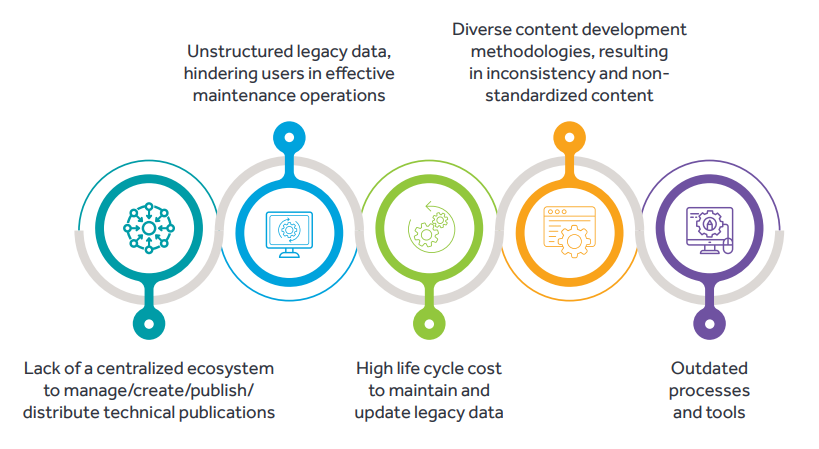
In recent years, much has changed in the technical publications industry. The development of more complex equipment means more data to collect, process, and analyze than ever before. The paper-based technical publications industry has evolved to give rise to content management solutions and has redefined how technical information is documented today. Further, servitization or data-driven maintenance contracts creates the need for integrated asset management, fault isolation, technical publications, and spares and tooling to be on a single intuitive platform.
The content management system (CMS) can hold quanta of data in baselines and in languages. It comes with in-built capability to handle baselines to assist easy and efficient tracking of multiple users working on the content. The content in the CMS can be reused for various projects and platforms. In addition, the content can be published in both physical and digital forms.
Further, the CMS can be integrated as outlined below to provide a seamless user experience:
The content is made accessible 24x7 over the Web through a distribution platform. The platform provides an enhanced experience with features that enable providing feedback on tech pub content, ordering spares, performing detailed search, navigating between different manuals, tracking baselines, etc. The experience is also optimized to be deviceagnostic. Key essential features include intuitive indexing—search and retrieval features index all data for easy access through search functions and allow users to search by attributes such as publication dates, keywords, or author.
Technology has evolved to—
The advent of cutting-edge technologies such as artificial intelligence, data analytics, and augmented reality led to the transformation of end user documentation to facilitate more realtime support service, thereby engaging end users with real-time and tailored information.
Cyient leverages two decades of extensive experience in technical publications to develop leading-edge technical content and transform the user experience through innovative solutions
Cyient offers a wide range of next-gen technical publication solutions from digitizing legacy data to authoring/managing manuals, to transformation and personalization of data.
Next-Gen Technical Publications Suite of solutions to accelerate digital transformation in technical publications for an enterprise.

Cyient has developed a digital tool kit together with its technology partners to address complex issues and enable smooth implementation processes for its customers.
The AI, ML, and NLP technologies-based solution transforms legacy data into structured modular content.
Salient features:

The CMS platform lets users create, edit, archive, collaborate, report, publish, and distribute.
Key features:
The solution is a digital interface designed to access technical documentation (including videos, and animations) in an intuitive and immersive environment. This next-gen interface will transform the end customer (OEMs, operators, and service technicians) experience by providing access to technical data using handheld devices. Customers can access data from anywhere in the world 24x7, and get updates on manual revisions easily.
Key features:
A comprehensive fault isolation solution that provides interactive and collaborative troubleshooting while capturing new field experience to grow and retain tribal knowledge and improve first-time fix.
Key features:
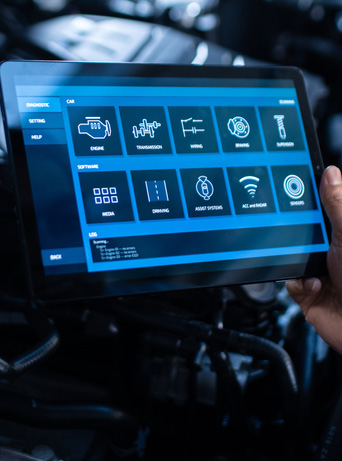
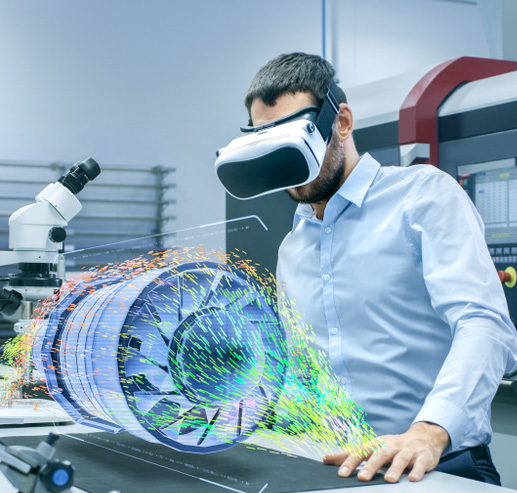
Cyient’s in-house digital team offers an immersive AR/VR/MR experience based on the needs of an enterprise ranging from maintenance to training.
Key features:
Cyient leverages its experience in executing large and complex projects in different phases of a product life cycle to support enterprises with collaborative tools.
Salient features:
Business Benefits/Best Practices
Cyient’s digital tool kit helps streamline technical documentation processes, improve customer experience through intuitive and immersive content delivery. Proven benefits include reduced translation costs, faster timeto-market, reduction in cycle time for legacy data transformation, and improved quality.
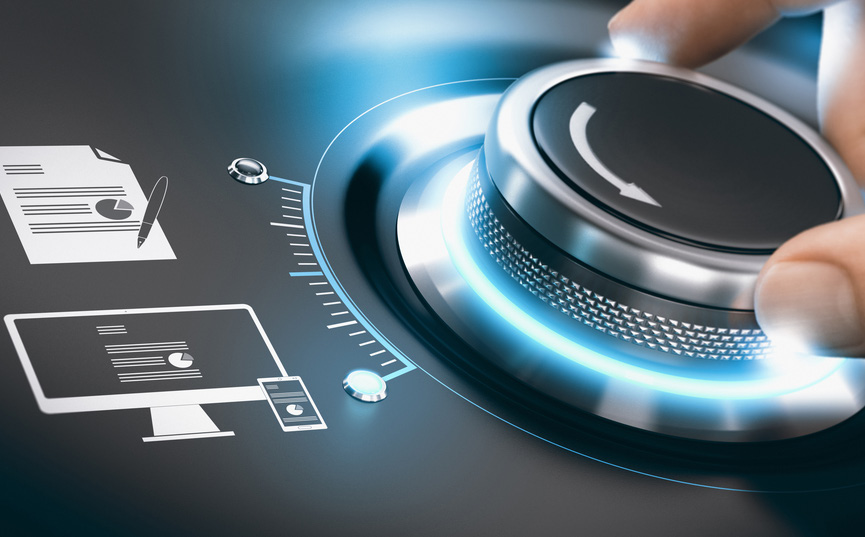
Problem Statement
High cost of maintenance and increased revision time of over six million pages of tech pub content due to various legacy formats across product portfolio
Outcomes
40% reduction in conversion efforts to S1000D
25% productivity savings passed to customer
Solution
Cyient delivered the following automated S1000D conversion:
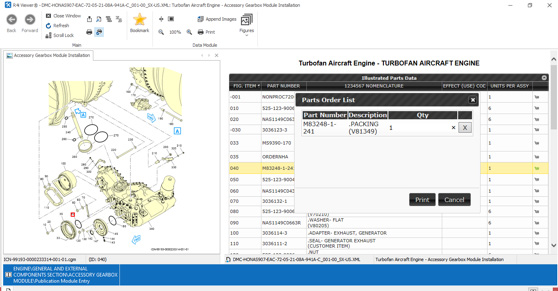
Problem Statement
Outcomes
30% reduction in fault resolution time
40% reduction in field queries
Solution
Cyient implemented an AI-based guided diagnostics software that could—
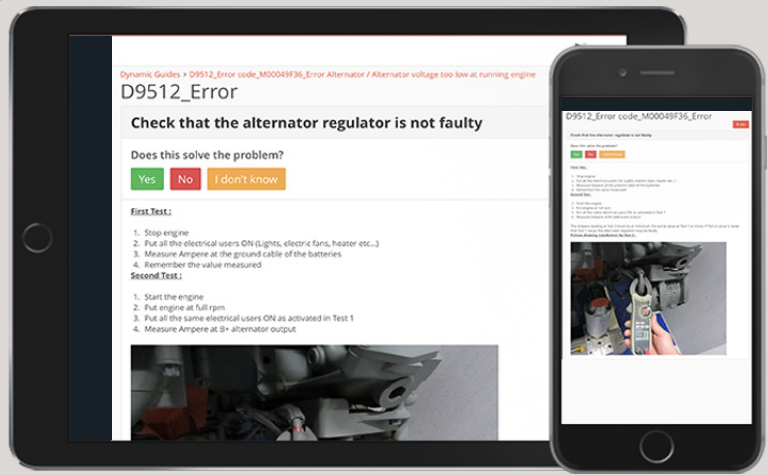
Problem Statement
Outcomes
20% reduction in training cost Complete traceability of training, measurement, and effectiveness in LMS
Solution
Cyient implemented an AI-based guided diagnostics software that could—
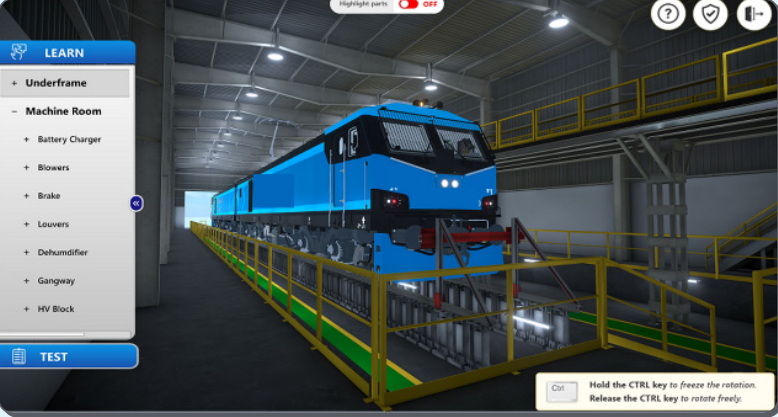
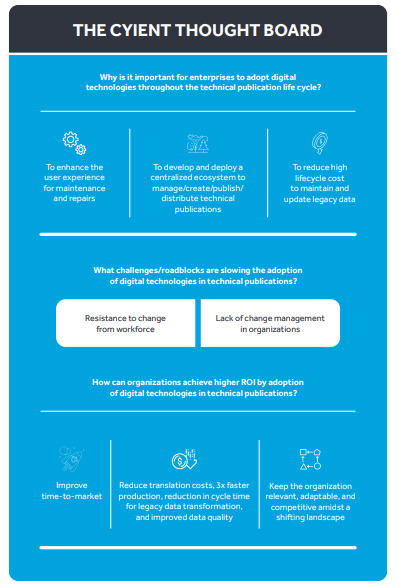
A collaborative and integrated platform for technical publications helps organizations achieve multiple goals. These include standardization and consistency, time and cost savings in conversions, and improved time-tomarket, along with an intuitive and immersive customer experience.
As an engineering services provider, Cyient works closely with industry experts, and new technologies to align our offerings to the technical publications industry trends. We enable this through our deep focus on the megatrends related to Hyper Automation and Smart Operations, and building solutions under Data AI and Platformization.
Cyient (Estd: 1991, NSE: CYIENT) is a leading global engineering and technology solutions company. We are a Design, Build, and Maintain partner for leading organizations worldwide. We leverage digital technologies, advanced analytics capabilities, and our domain knowledge and technical expertise, to solve complex business problems.
We partner with customers to operate as part of their extended team in ways that best suit their organization’s culture and requirements. Our industry focus includes aerospace and defense, healthcare, telecommunications, rail transportation, semiconductor, geospatial, industrial, and energy. We are committed to designing tomorrow together with our stakeholders and being a culturally inclusive, socially responsible, and environmentally sustainable organization.
For more information, please visit www.cyient.com
Cyient (Estd: 1991, NSE: CYIENT)delivers Intelligent Engineering solutions for Digital, Autonomous and Sustainable Future
© Cyient 2024. All Rights Reserved.